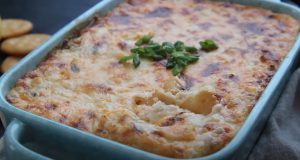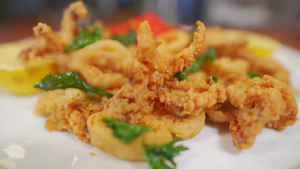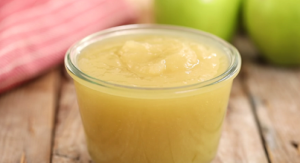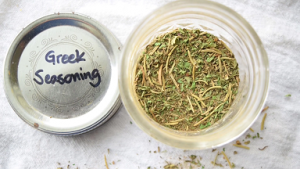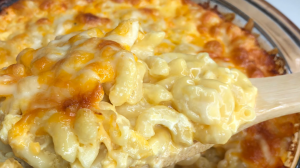Dive into the heart of Maryland with this hearty crab soup that brings the taste of the Chesapeake Bay right to your kitchen. With a blend of fresh vegetables and succulent blue crab, this soup is perfect for any occasion, whether it’s a family gathering or a quiet night in.
Some ingredients in this recipe might not be commonly found in every household. Fresh lima beans and blue crab crabmeat can sometimes be elusive. When heading to the supermarket, be sure to check the seafood section for the blue crab claws and the frozen section for lima beans. These components are essential to achieving the authentic Maryland flavor.
Ingredients For Maryland Crab Soup
Stewed tomatoes: Adds a rich, tangy base to the soup.
Water: Used to adjust the consistency and boil the crab claws.
Lima beans: Provides a creamy texture and added protein.
Corn kernels: Contributes sweetness and crunch.
Carrots: Adds natural sweetness and color.
Onion: Enhances the savory depth of the soup.
Old Bay seasoning: A signature spice mix that defines Maryland cuisine.
Beef broth: Adds richness and depth to the soup base.
Blue crab crabmeat: The star of the dish, providing a sweet and delicate seafood taste.
Blue crab claws: Adds a dramatic presentation and extra crab flavor.
One reader, Etty Mobley says:





This Maryland crab soup recipe is fantastic! The flavors blend perfectly, and the Old Bay seasoning adds a delightful kick. The fresh vegetables and crabmeat make it hearty and satisfying. A must-try for seafood lovers!
Key Techniques for Making Maryland Crab Soup
How to chop onion: Chop the onion finely to ensure it blends well with the other vegetables. How to boil crab claws: Bring a gallon of water to a boil, add the crab claws, and boil for 6 minutes before draining. How to simmer: Maintain a low heat to keep the mixture just below boiling, allowing flavors to meld without overcooking.
How To Make Maryland Crab Soup
Umami-filled crab soup can enhance any meal. Try this this simple recipe with fresh blue crabs and a handful of ingredients for a well-rounded flavor.
Serves:
Ingredients
- 14½ozstewed tomatoes,2 cans
- 3cupswater
- 1cupfresh lima beans
- 1cupcorn kernels,frozen
- 1cupcarrots,sliced
- 2tbsponion,chopped
- 2tbspOld Bay Seasoning
- 2cupsbeef broth
- 1lbblue crab crabmeat
- 10blue crab claws,steamed
- 1gallonwater
Instructions
-
Place whole tomatoes, water, lima beans, corn, sliced carrots, chopped onion, Old Bay seasoning, and beef broth, in a 4-quart pot. Heat to simmer, cover, and cook for 5 minutes.
-
Bring 1 gallon water to boil. Add crab claws and boil 6 minutes. Drain crab and set aside
-
Stir crabmeat into tomato and vegetable mixture. Cover and simmer 10 to 15 minutes longer. Serve hot.
Nutrition
- Calories: 113.34kcal
- Fat: 1.14g
- Saturated Fat: 0.25g
- Trans Fat: 0.01g
- Monounsaturated Fat: 0.20g
- Polyunsaturated Fat: 0.40g
- Carbohydrates: 10.74g
- Fiber: 2.39g
- Sugar: 2.69g
- Protein: 14.97g
- Cholesterol: 60.38mg
- Sodium: 487.75mg
- Calcium: 110.12mg
- Potassium: 513.63mg
- Iron: 1.64mg
- Vitamin A: 115.38µg
- Vitamin C: 11.93mg
Crucial Technique Tip for Maryland Crab Soup
To enhance the flavor of your blue crab crabmeat, try gently sautéing it in a bit of butter with a pinch of Old Bay seasoning before adding it to the tomato and vegetable mixture. This will give the crab a richer taste and add depth to your Maryland crab soup.
Time-Saving Tips for Preparing This Crab Soup Recipe
Use pre-cut vegetables: Save time by using pre-cut carrots, onions, and other vegetables from the store.
Frozen ingredients: Opt for frozen lima beans and corn kernels to skip the prep work.
Pre-made broth: Use store-bought beef broth to eliminate the need for making it from scratch.
Crabmeat in a can: Consider using canned blue crab crabmeat to save on the time needed to pick through fresh crab.
Batch cooking: Make a larger batch and freeze portions for quick meals later.
Substitute Ingredients For Maryland Crab Soup Recipe
stewed tomatoes - Substitute with canned diced tomatoes: They provide a similar texture and flavor, though you may need to add a bit of sugar to mimic the sweetness of stewed tomatoes.
water - Substitute with vegetable broth: This adds more depth of flavor compared to plain water.
fresh lima beans - Substitute with frozen lima beans: They are more readily available and retain similar texture and flavor.
corn kernels - Substitute with frozen corn: Frozen corn is convenient and retains much of the fresh corn's sweetness and crunch.
carrots - Substitute with parsnips: Parsnips have a similar texture and a slightly sweeter flavor, which can complement the soup well.
onion - Substitute with shallots: Shallots provide a milder, sweeter flavor that can enhance the overall taste of the soup.
old bay seasoning - Substitute with cajun seasoning: While not identical, cajun seasoning offers a similar blend of spices that can provide a comparable flavor profile.
beef broth - Substitute with chicken broth: Chicken broth is lighter but still adds a rich, savory base to the soup.
blue crab crabmeat - Substitute with imitation crabmeat: While not as flavorful, imitation crabmeat is a more affordable and accessible option.
blue crab claws - Substitute with snow crab claws: Snow crab claws have a similar texture and flavor, making them a suitable alternative.
water - Substitute with clam juice: Clam juice adds a briny, oceanic flavor that enhances the seafood elements of the soup.
How to Beautifully Present This Crab Soup
Serve in a shallow, wide bowl: Use a pristine white bowl to allow the vibrant colors of the stewed tomatoes, corn kernels, and carrots to pop visually.
Garnish with fresh herbs: Add a sprig of fresh parsley or cilantro on top of the soup to add a touch of green and a burst of freshness.
Arrange crab claws artfully: Place the blue crab claws in a fan-like arrangement on one side of the bowl, ensuring they are partially submerged in the soup for an elegant presentation.
Drizzle with infused oil: Lightly drizzle a few drops of lemon-infused olive oil over the soup to add a subtle citrus aroma and a glossy finish.
Use a contrasting plate: Place the bowl on a dark-colored plate or charger to create a striking contrast that highlights the dish's colors.
Add a side of crusty bread: Serve with a small piece of toasted baguette or sourdough on the side, brushed with garlic butter for an added touch of luxury.
Serve with a small spoon: Provide a delicate, silver soup spoon to enhance the dining experience and add a touch of sophistication.
Finish with a sprinkle of sea salt: Just before serving, add a light sprinkle of flaky sea salt to enhance the flavors and add a bit of texture.
Essential Tools for Making Maryland Crab Soup
4-quart pot: A medium-sized pot used to combine and simmer the tomatoes, water, lima beans, corn, carrots, onion, old bay seasoning, and beef broth.
Knife: Essential for chopping the onion and slicing the carrots.
Cutting board: Provides a safe and stable surface for chopping and slicing vegetables.
Measuring cups: Used to measure out the water, lima beans, corn, and beef broth accurately.
Measuring spoons: Necessary for measuring the old bay seasoning.
Large pot: Used to bring a gallon of water to a boil for cooking the crab claws.
Tongs: Handy for handling and draining the boiled crab claws.
Colander: Used to drain the water from the boiled crab claws.
Wooden spoon: Ideal for stirring the crabmeat into the tomato and vegetable mixture.
Ladle: Useful for serving the hot soup into bowls.
Storing and Freezing Maryland Crab Soup
Allow the maryland crab soup to cool completely before storing or freezing. This will prevent the formation of condensation, which can lead to a watery texture when reheated.
For short-term storage, transfer the cooled soup to an airtight container and refrigerate for up to 3-4 days. The flavors will continue to meld and develop during this time, making the soup even more delicious.
If you plan to freeze the soup, consider the following steps:
- Divide the cooled soup into portion-sized freezer-safe containers or resealable bags. This will allow you to thaw only the amount you need for future meals.
- Leave about an inch of headspace at the top of each container to allow for expansion during freezing.
- Label the containers or bags with the date and contents to keep track of your frozen inventory.
- Place the containers or bags in the freezer, ensuring they lie flat for even freezing and efficient storage.
Maryland crab soup can be frozen for up to 3 months without significant loss of quality. However, keep in mind that the texture of the vegetables and crabmeat may slightly change after freezing and thawing.
To reheat the frozen soup, transfer it to the refrigerator to thaw overnight. Once thawed, pour the soup into a pot and gently heat it over medium-low heat, stirring occasionally, until it reaches the desired temperature. Avoid boiling the soup, as this can cause the crabmeat to become tough and rubbery.
If you find that the thawed soup has separated or has a slightly grainy texture, you can blend a small portion of the soup until smooth and then stir it back into the pot. This will help to restore the creamy consistency of the soup.
Lastly, taste the reheated soup and adjust the seasoning if necessary. You may need to add a little extra Old Bay seasoning or salt to brighten up the flavors after freezing and thawing.
How To Reheat Leftover Crab Soup
Reheat the maryland crab soup in a pot on the stove over medium-low heat, stirring occasionally, until it reaches the desired temperature. This method ensures even heating and allows the flavors to meld together.
If you're short on time, you can reheat the soup in the microwave. Transfer the desired portion to a microwave-safe bowl and heat it in 30-second intervals, stirring between each interval, until it's heated through.
For a quick and easy reheating method, use a slow cooker or crockpot. Transfer the leftover soup to the slow cooker, set it on low heat, and let it warm up for about 1-2 hours, or until it reaches the desired temperature.
If you find that the soup has thickened after refrigeration, you can thin it out by adding a little beef broth or water while reheating. This will help restore the original consistency of the soup.
To enhance the flavor of the reheated soup, consider adding a squeeze of fresh lemon juice or a sprinkle of Old Bay seasoning just before serving. These additions can brighten up the flavors and make the soup taste freshly made.
If you have leftover crab claws, you can reheat them separately by steaming them for a few minutes or heating them in the oven wrapped in foil with a little moisture (e.g., water or broth). Add the reheated claws to the soup just before serving for an impressive presentation.
Interesting Fact About Maryland Crab Soup
Maryland crab soup is a traditional dish from the Chesapeake Bay region, known for its rich and flavorful crabmeat and Old Bay seasoning. This recipe often includes a variety of vegetables, making it a hearty and nutritious option.
Is Making Maryland Crab Soup at Home Cost-Effective?
This Maryland crab soup recipe is moderately cost-effective. The blue crab and crabmeat are the most expensive ingredients, but the vegetables like lima beans, corn, and carrots are affordable. The use of beef broth and Old Bay seasoning adds flavor without breaking the bank. For a household of 4, the approximate cost is around $30-$35. Overall Verdict: 7/10.
Is Maryland Crab Soup Healthy or Unhealthy?
The Maryland crab soup recipe is a hearty and flavorful dish that incorporates a variety of vegetables and succulent crabmeat. From a nutritional standpoint, this soup has both healthy and unhealthy aspects:
Healthy components:
- Vegetables like lima beans, corn, carrots, and onions provide essential vitamins, minerals, and dietary fiber
- Crabmeat is a lean protein source that is low in calories and rich in omega-3 fatty acids, which support heart health
Unhealthy aspects:
- The use of beef broth adds extra sodium and saturated fat to the dish
- Old Bay seasoning, while flavorful, also contributes to the high sodium content
- The recipe lacks leafy greens or other nutrient-dense vegetables
To enhance the nutritional value of this Maryland crab soup, consider the following suggestions:
- Replace the beef broth with a low-sodium vegetable broth to reduce the overall sodium content
- Incorporate additional vegetables such as spinach, kale, or zucchini to boost the fiber and nutrient profile of the soup
- Use a reduced-sodium version of Old Bay seasoning or create a homemade blend using herbs and spices like paprika, celery seed, and black pepper
- Opt for fresh crabmeat instead of canned varieties, as they tend to have lower sodium levels
- Serve the soup with a side salad or whole-grain bread to add more fiber and nutrients to the meal
By making these adjustments, you can transform this classic Maryland crab soup into a more balanced and nutritious dish without compromising on its iconic flavor profile. The key is to focus on incorporating more nutrient-dense ingredients while reducing the reliance on high-sodium components.
Editor's Opinion on This Maryland Crab Soup Recipe
This Maryland crab soup recipe is a delightful blend of fresh vegetables and succulent blue crab, enhanced by the classic Old Bay seasoning. The use of both crabmeat and crab claws adds depth and texture, making it a hearty and satisfying dish. However, the recipe could benefit from a longer simmering time to fully meld the flavors. Additionally, consider adding a splash of white wine or a touch of garlic for an extra layer of complexity. Overall, it's a comforting and flavorful soup that showcases the best of Maryland's seafood.
Enhance Your Maryland Crab Soup Recipe with These Unique Side Dishes:
Similar Soup Recipes to Try
Appetizer and Dessert Pairings for This Crab Soup
Why trust this Maryland Crab Soup Recipe:
This Maryland crab soup recipe is a true classic, combining fresh blue crab with a medley of vegetables and Old Bay seasoning. The blend of stewed tomatoes, corn, and lima beans creates a rich and hearty base, while the crabmeat adds a delicate sweetness. The step-by-step instructions ensure a foolproof cooking process, making it perfect for both novice and experienced cooks. Trust in the quality ingredients and traditional preparation methods to deliver an authentic taste of Maryland.
Was this page helpful?
Have your own special recipe to share? Submit Your Recipe Today!




